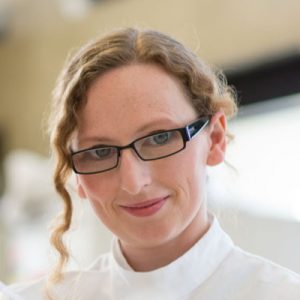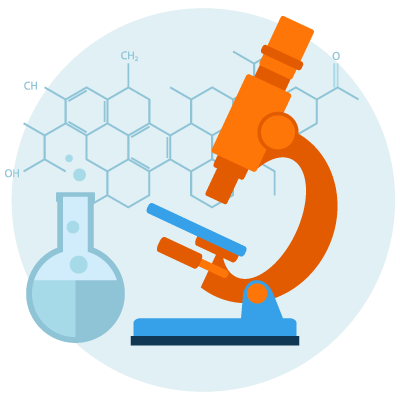Summary
Multiple sclerosis (MS) is a complex autoimmune and neurodegenerative disease with no clear cause and no known cure. People with MS indicate that new treatments to protect and repair the brain and spinal cord is their greatest unmet need.
Professor Kaylene Young leads a multidisciplinary team of laboratory scientists, clinicians, biostatisticians, epidemiologists, geneticists, MS advocates and people living with MS, representing diverse experiences and vital perspectives to bridge the gap between MS research and practice. Their goal is to carry out laboratory research to identify signalling pathways that lead to the development of MS, learn how brain circuit function is impacted by MS, and design and translate treatments to protect and repair the brain. For this project:
- The team will work with clinicians to progress their first potential myelin replacement therapy through a phase II clinical trial and evaluate its efficacy in people with MS.
- Using laboratory models, advanced microscopy, behavioural analyses, and electrophysiology, they will investigate how myelin loss and replacement impact brain function.
- They will study families with an unusually high incidence of MS, which may render clues as to MS associated genetics. The team will then use induced pluripotent stem cells to characterise the impact of rare, family-specific genetic variants on cell behaviour.
Progress to Date
Over the past year, Professor Young and her team has recruited more than 100 people with MS into their phase II trial to examine the effects of transcranial magnetic stimulation (TMS) on MS symptoms and MRI brain scans. So far, they have found that low intensity TMS is safe for people with TMS. They have also carried out a preclinical study that found changes in nerves following myelin loss made the nerves more sensitive to stimulation and that too much stimulation can cause the nerve cell to die. This may explain how myelin loss leads to loss of nerve cells and the progression MS. Additionally, the team found that remyelination reversed this effect, returning the nerve cells to “normal. Thus, myelin repair treatments could potentially restore impulse conduction to nerves and fix the way the network is wired.
Genes play a role in MS development and severity. Professor Young and her team found that some gene changes change the function of brain cells. This suggests that brain cells themselves are part of the problem and they should be a key target for disease modifying therapies.
Over the next 12 months, Professor Young and her team will complete the phase II trial of TMS and analyse the data. They will also complete imaging of neurons in the brain during demyelination and remyelination and continue their analysis of a laboratory model to understand what gene variations do to different cell types and how they can influence MS disease processes.
Publications
- Pericyte ablation causes hypoactivity and reactive gliosis in adult mice. Jake M. Cashion, Lachlan S. Brown, Gary P. Morris, Alastair J. Fortune, Jo-Maree Courtney, Carlie L. Cullen,Kaylene M. Young, Brad A. Sutherland. bioRxiv 2023.10.26.564269; doi: https://doi.org/10.1101/2023.10.26.564269
- Low-intensity repetitive transcranial magnetic stimulation is safe and well tolerated by people living with MS -outcomes of the phase I randomised controlled trial (TAURUS). Phuong Tram Nguyen, Amin Zarghami, Kalina Makowiecki, Natasha Stevens, Chigozie Ezegbe, Kain Kyle, ChenyuWang, Linda Ly, Katie De La Rue, Mark R Hinder, Lewis Johnson, Jennifer Rodger, Samantha Cooper, Carlie LCullen, Michael Barnett, Kaylene M Young#, Bruce V Taylor# # co-senior authors. medRxiv 2024.02.29.24303579; doi: https://doi.org/10.1101/2024.02.29.24303579
- Gluk4-containing kainate receptors regulate synaptic communication in the motor cortex and reduce axon degeneration in adult mice. Raphael Ricci, Jessica L Fletcher, Kalina Makowiecki, Renee E Pepper, Alastair Fortune, Carlie L Cullen, William MConnelly, Jac Charlesworth, Nicholas B Blackburn, Kimberley A Pitman, Kaylene M Young. bioRxiv2024.02.29.582867; doi: https://doi.org/10.1101/2024.02.29.582867
- Low intensity repetitive transcranial magnetic stimulation enhances remyelination by newborn and surviving oligodendrocytes in the cuprizone model of toxic demyelination. Phuong Tram Nguyen, Kalina Makowiecki, Thomas S Lewis, Alastair Fortune, Mackenzie Clutterbuck, Laura Reale, Bruce V Taylor, Jennifer Rodger, Carlie L Cullen, Kaylene M Young bioRxiv 2024.02.29.582855; doi: https://doi.org/10.1101/2024.02.29.582855
- Induced pluripotent stem cell derived pericytes respond to mediators of proliferation and contractility. King NE, Courtney JM, Brown LS, Fortune AJ, Blackburn NB, Fletcher JL, Cashion JM, Talbot J, Pébay A, Hewitt AW, Morris GP, Young KM, Cook AL, Sutherland BA. Stem Cell Res Ther. 2024 Mar 3;15(1):59. doi: 10.1186/s13287-024-03671-x. PMID: 38433209 Free PMC article.
- Pathologically mislocalised TDP-43 in upper motor neurons causes a die-forward spread of ALS-like pathogenic changes throughout the mouse corticomotor system. Reale LA, Dyer MS, Perry SE, Young KM, Dickson TC, Woodhouse A, Blizzard CA. Prog Neurobiol. 2023 Jul;226:102449. doi: 10.1016/j.pneurobio.2023.102449. Epub 2023 Apr 1. PMID: 37011806
- How does neurovascular unit dysfunction contribute to multiple sclerosis? Cashion JM, Young KM, Sutherland BA. Neurobiol Dis. 2023 Mar; 178:106028. doi: 10.1016/j.nbd.2023.106028. Epub 2023 Feb 1. PMID: 36736923 Free article. Review.
- Safety of low-intensity repetitive transcranial magneTic brAin stimUlation foR people living with mUltiple Sclerosis (TAURUS): study protocol for a randomised controlled trial. Makowiecki K, Stevens N, Cullen CL, Zarghami A, Nguyen PT, Johnson L, Rodger J, Hinder MR, Barnett M, Young KM, Taylor BV. Trials. 2022 Aug 3;23(1):626. doi: 10.1186/s13063-022-06526-z. PMID: 35922816 Free PMC article.
- Generation and characterisation of four multiple sclerosis iPSC lines from a single family. Fortune AJ, Taylor BV, Charlesworth JC, Burdon KP, Blackburn NB, Fletcher JL, Mehta A, Young KM. Stem Cell Res. 2022 Jul;62:102828. doi: 10.1016/j.scr.2022.102828. Epub 2022 Jun 5. PMID: 35679759 Free article.
- Using MS induced pluripotent stem cells to investigate MS aetiology. Fortune AJ, Fletcher JL, Blackburn NB, Young KM. Mult Scler Relat Disord. 2022 Jul; 63:103839. doi: 10.1016/j.msard.2022.103839. Epub 2022 Apr 30. PMID: 35523059 Free article. Review.
- Protocadherin 15 suppresses oligodendrocyte progenitor cell proliferation and promotes motility through distinct signalling pathways. Zhen Y, Cullen CL, Ricci R, Summers BS, Rehman S, Ahmed ZM, Foster AY, Emery B, Gasperini R, Young KM. Commun Biol. 2022 May 30;5(1):511. doi: 10.1038/s42003-022-03470-1.
Updated 31 March 2024





